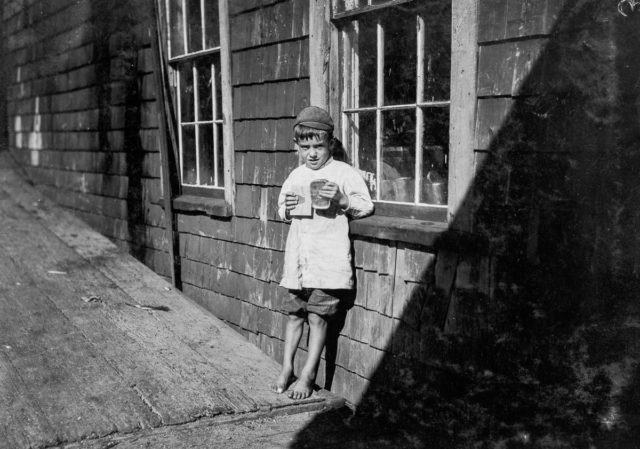“There is work that profits children, and there is work that brings profit only to employers. The object of employing children is not to train them, but to get high profits from their work.”
In 1890 the number of underage children in the US who worked for miserable wages and in terrible conditions was 1.5 million, a number which climbed to 2 million by 1910. By the early 1900s, Americans were calling child labor “child slavery” and demanding an immediate end to this terrible exploitation.The National Child Labor Committee in 1908 hired the sociologist and photographer Lewis Hine to document the awful working conditions and the exploitation of underage laborers across the United States.
Hine, using his camera as a tool for social reform, traveled across the United States capturing the tired faces of underaged workers. He interviewed dozens of children working in different industries, from bike messengers to rural miners.


Lewis Hine commented on one of his most famous photos: “Her father is the boss of a cutting room in Factory #1. He asked me to take some photos of her, as he has her do a singing act in vaudeville in the winter. She’s old enough now to go through the audience and sell her own photos.”
These photos were taken in Eastport, Maine, which was known as the birthplace od the American sardine industry. Hine documented the children working mostly as “cutters”- assigned to chopping off the fish’s tail and head. Working with sharp knives over long shifts and forced to prepare as many sardines as possible, the children frequently suffered painful cuts.
The empathetic photos and honest interviews exposed the true face of the infamous “child slavery” and ultimately helped to support New Deal legislation that would ensure lasting reform.

